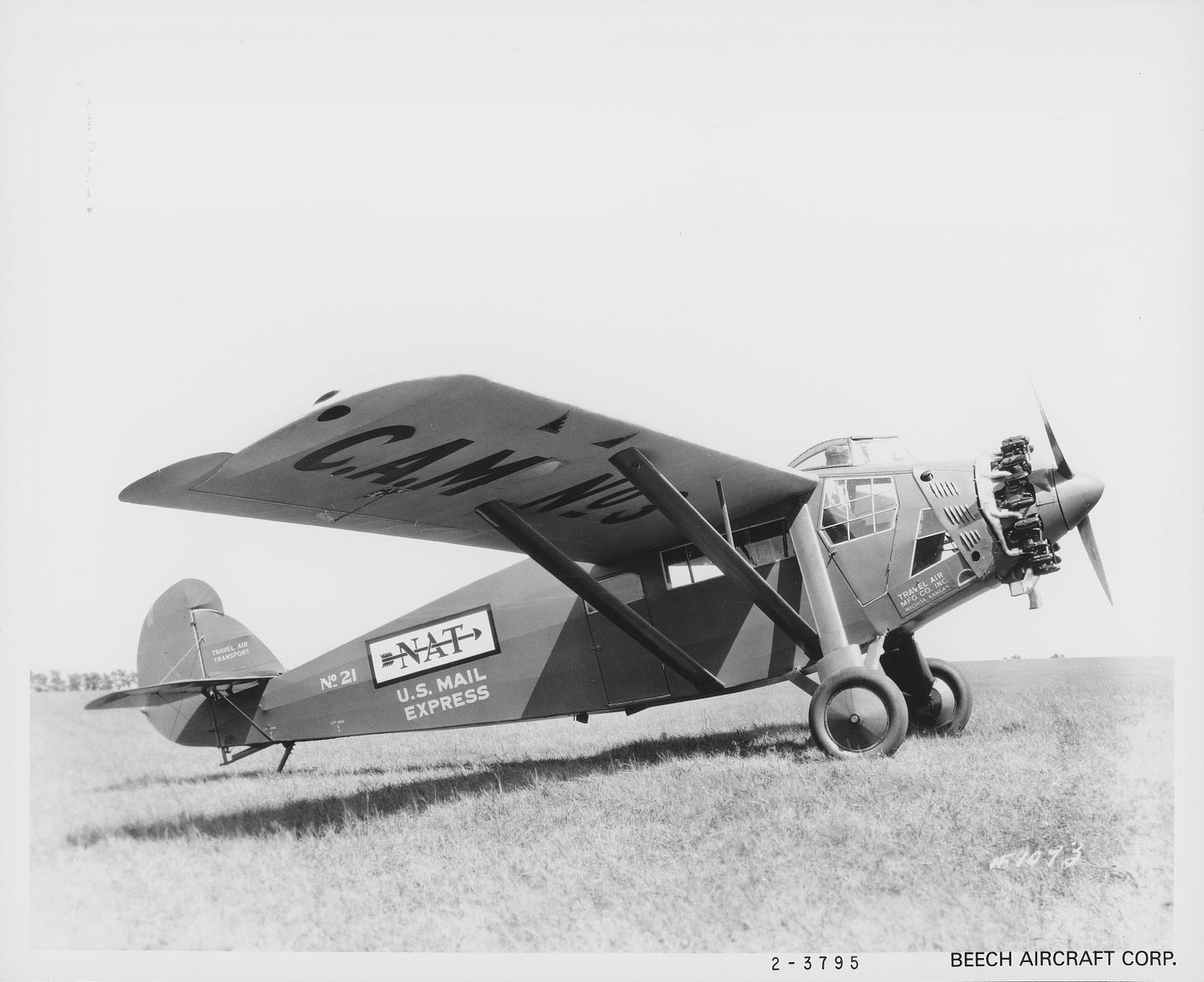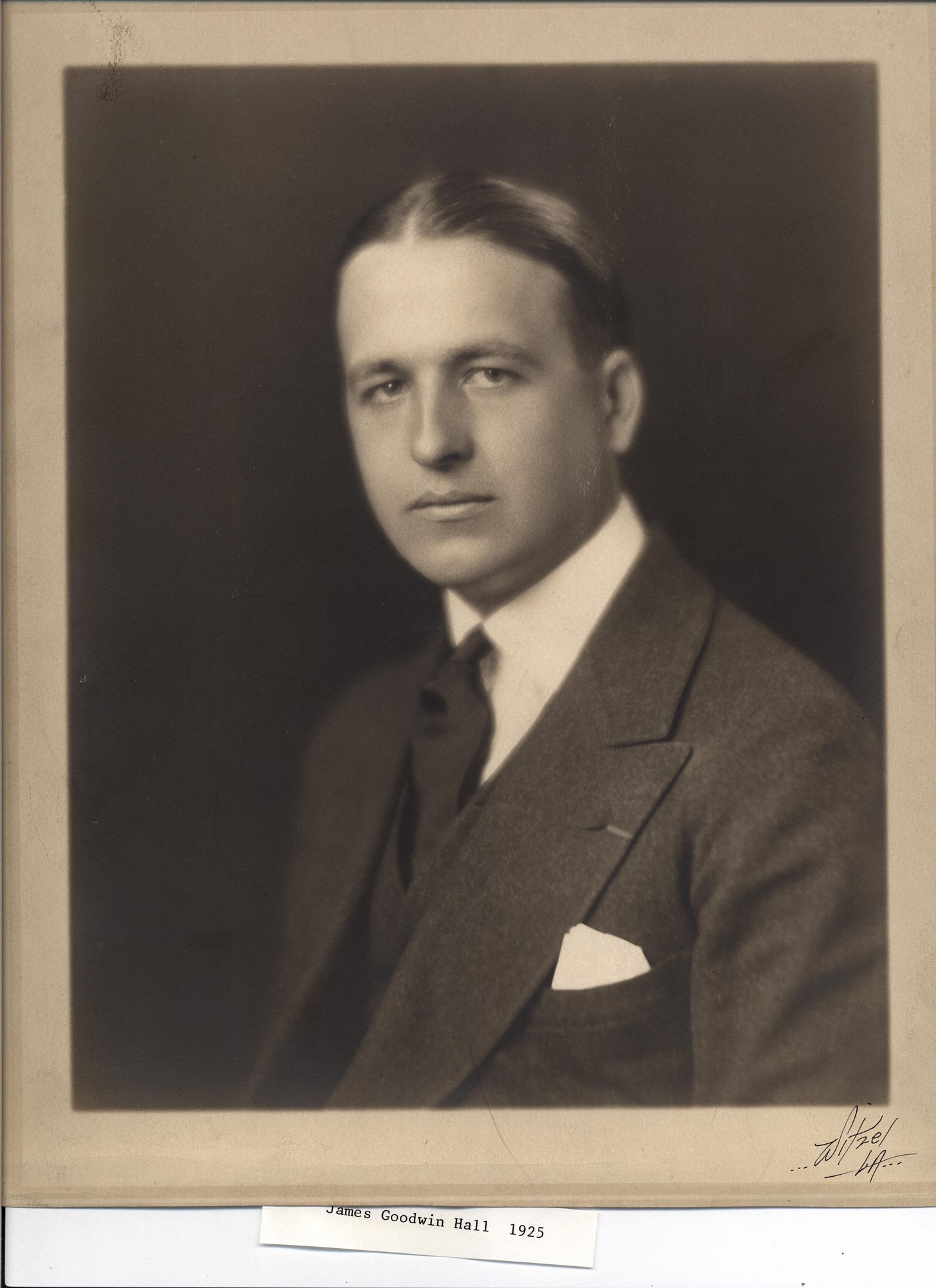The Dawn of Air Mail Service - the next Evolution of Flight
My grandfather would be employed alongside of the mover's and shaker's of early commercial flight, who were creating the foundation for the US Air Mail service.
James G. Hall entered World War I in 1918 as an aviation cadet at the very beginning of the airplane’s development and use in the military. By way of the needs of war, the application of the biplane for observation, reconnaissance, air combat, and incendiary bombing would be the foundation for further invention and design after the armistice was signed in Europe in November of 1918. In the post-World War I 1920s, the United States would take the leadership role in the advancement and expansion of this new technology of flight.
A small group of American visionaries with exceptional engineering and mechanical skills and some former pilots from World War I, all with competitive passionate beliefs, would advance the future of the airplane in both military and commercial terms. The revolution of use and design of many types of airplanes in the United States during the early 1920s would begin an age referred to as the “Golden Age of Flight.” Air races and daring record-setting flights dominated the news. Airplanes evolved from wood-and-fabric biplanes to streamlined metal monoplanes.
James G. Hall would meet and become associated with two of the most important pioneering aeronautical figures in the invention, design, testing, and financing of the airplane for pre-commercial travel: Howard Earle Coffin and Glenn Curtiss. These two men with whom my grandfather would develop intimate business associations with are collectively known, along with the Wright brothers and a few other visionaries, as “the fathers of aviation.”
By the early 1920s, Howard Earle Coffin was an established and recognized engineering genius, inventor, and visionary, leading the early development of the airplane and automobile. He would become a mentor and business associate of James G. Hall, introducing him to a new world of financing, specifically relating to aircraft development.
My grandfather would learn the tools of raising capital through company formations based on the issuance of stock. These financing skills would later serve my grandfather well when he would become a Wall Street broker and member of the New York Stock Exchange (NYSE) during the last half of the 1920s.
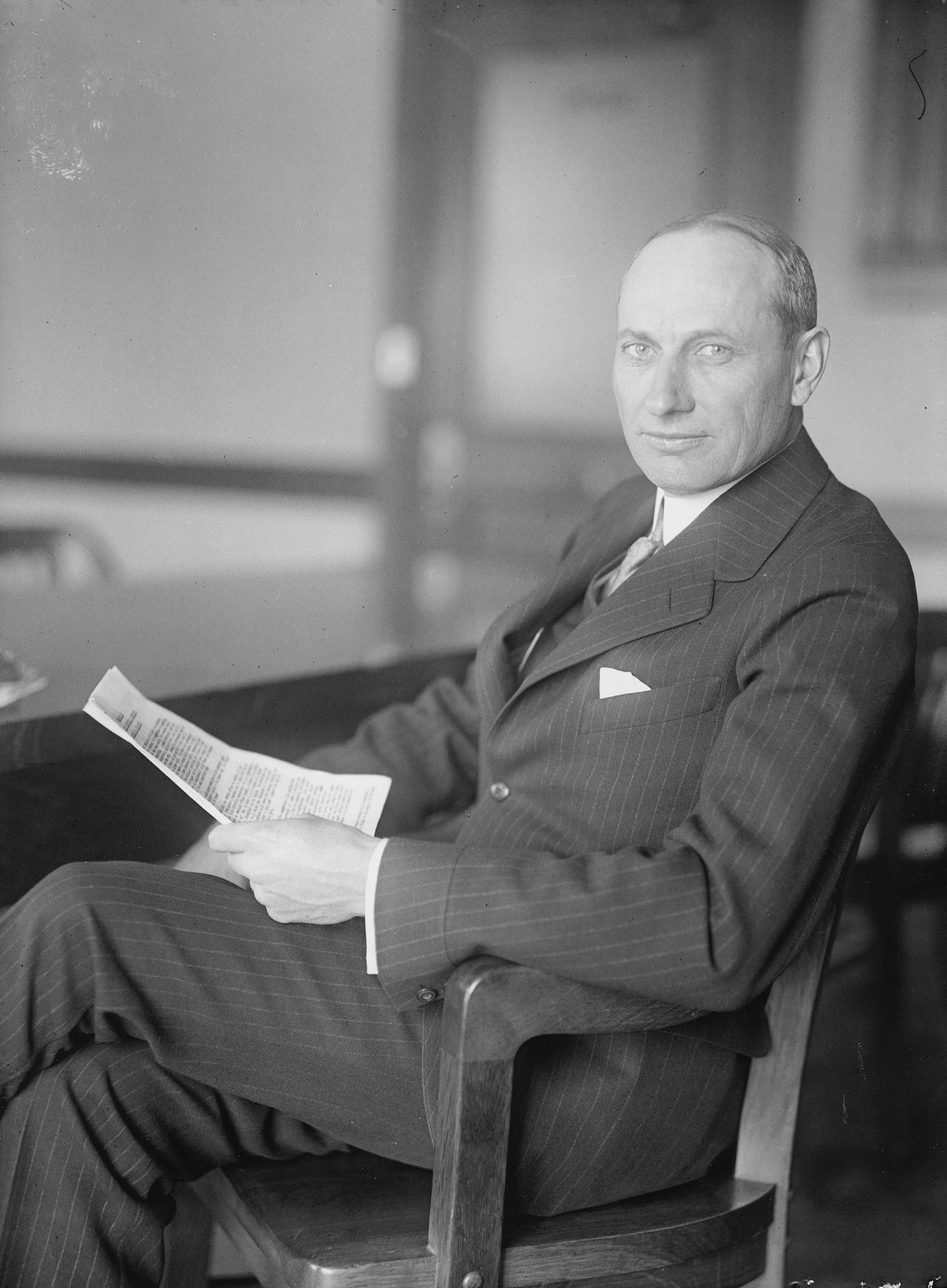
In addition to his prominent position in the business world, Coffin had served under President Woodrow Wilson during World War I as Chairman of the Aircraft Production Board. He would, in 1925, be appointed to the Morrow Board by President Calvin Coolidge to investigate and make recommendations regarding the federal government’s role in air safety and in creating an air defense. The board’s recommendations were to “establish the principle of federal regulation of civilian flying, a vital step toward a federal air law.”
The relationship between James G. Hall and Coffin was certainly on both a personal and business enterprise level. This is documented through references in newspaper articles and in my grandfather’s Military Service Record archived at the National Personnel Records Center (NPRC) in St. Louis, Missouri. Within his service record exists a section summarizing his aviation and military experience. Included in this professional resume is the following information:
“Completed reorganization work for the Curtiss Company in 1925. Associated with Howard Earle Coffin (Chairman, Aircraft Production Board, 1917-1918), from 1925 to 1930. Assisted in organization of the National Air Transport, National Aeronautic Association, Curtiss-Wright Company, etc. Flying status continued, all types of planes, commercial and military up to 1933.”
On a personal level, my father Howard Earle Coffin Hall, is named directly after Howard Earle Coffin. Throughout my adult life, in conversations with my now deceased father, I have had verbal confirmation of this relationship. According to my father’s account, Mr. Coffin, being childless, approached my grandfather James Goodwin Hall and asked my grandfather if he would name his son after Mr. Coffin. The reasoning being that Coffin wanted his namesake to live on in a male heir. My father was born June 13, 1923, and so-named Howard Earle Coffin Hall. Regrettably, throughout his life, my father was not forthcoming about the history of his family. I therefore have no further documentation of my grandfather’s personal relationship with Mr. Coffin.
Their business relationship is certain, but as to exactly which financial associations they engaged in outside of the National Air Transport, a forerunner of United Airlines, I have been unable to find, excepting parallel lines in the aircraft industry.
The second pioneer of aviation with whom my grandfather would be associated is Glenn Hammond Curtiss. Curtiss, like Coffin, is recognized as a “founding father” of flight and a key inventor and designer of several types of aircraft, including seaplanes and the first un-motorized glider. He was also a pilot and test pilot for his own aircraft, as well as an air-race competitor.
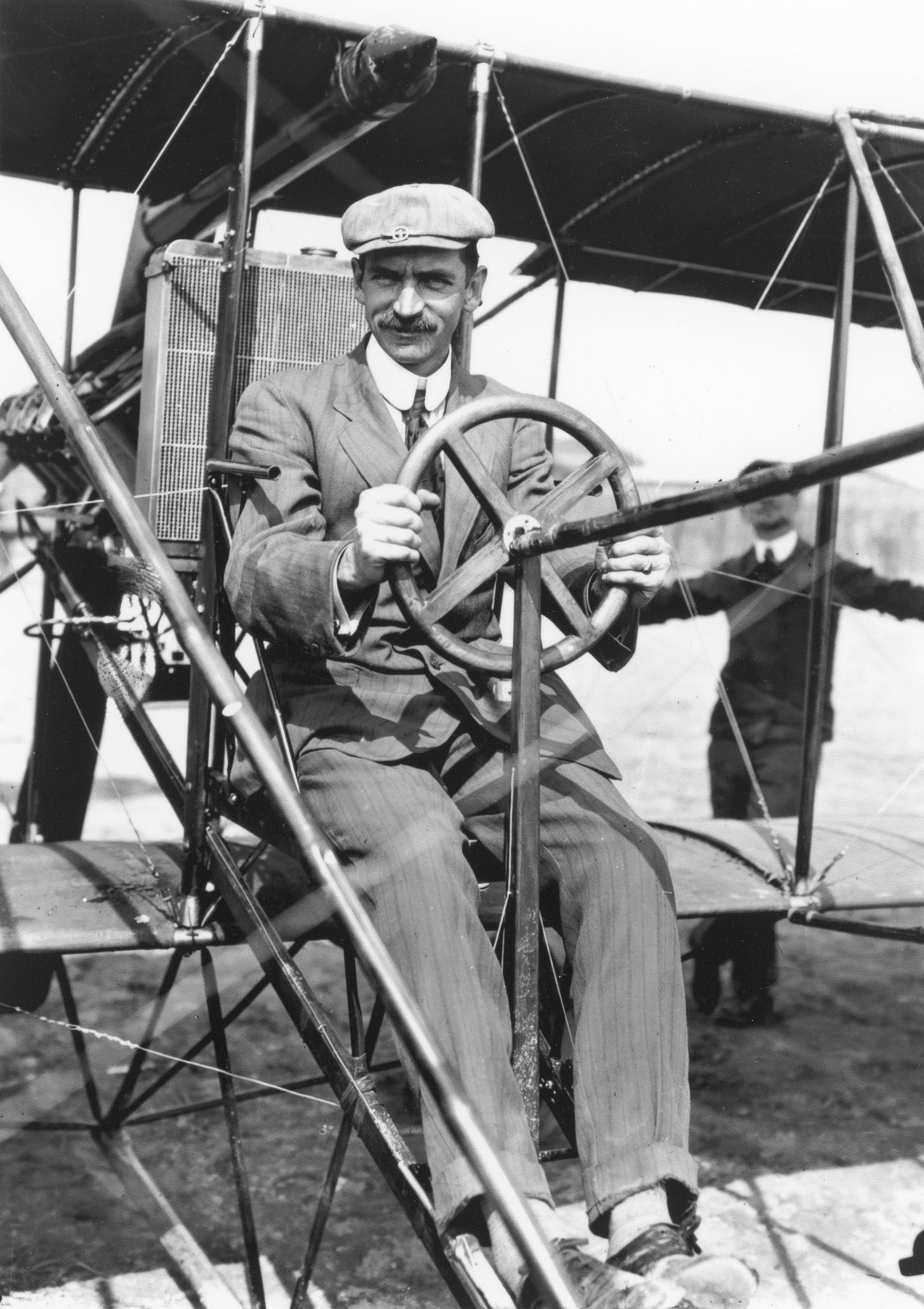
In 1909, Curtiss took part in the Grand Semaine d‘Aviation in Reims, France and, while flying his No. 2 biplane, won the overall speed event. On May 29, 1910, Curtiss flew from Albany to New York City to make the first long-distance flight between two major U.S. cities. In 1922, 1923, and 1925, Curtiss entered several of his own planes in the Pulitzer Cup Race, a point-to-point distance race ending in Atlantic City, New Jersey. His plane or engines, flown by other pilots, won each of those years. In addition, he won the Schneider Cup, a seaplane competition, in two consecutive races in 1922 and 1923. Overall, having formed the Curtiss Aeroplane and Motor Company in 1916, Curtiss produced more than 50 separate models of airplane during his lifetime.
Both Coffin and Curtiss would intersect in competing and developing early expanding airmail service, including night airmail, marketing themselves and vying for government contracts to provide the beginnings of airmail service state to state. They would indirectly promote the demand for the postal service by creating and offering transportation credibility in aircraft technology and design. With the establishment of The Air Commerce Act of 1926, the postmaster general would begin awarding airmail routes via competitive bidding, and regulating aircraft, airmen, navigational facilities, and the establishment of air traffic regulations. Howard Earle Coffin, Glenn Curtiss, and Henry Ford would be major players in obtaining and vastly expanding airmail routes that became transcontinental routes, coast to coast.
During this same period of plane observation and evaluation, James G. Hall would also meet and be accompanied by one the country’s foremost designers, Glenn Martin, owner of the recently formed Glenn Martin Company. The Glenn Martin Company merged in 1961 with a competitor to become Lockheed-Martin. Martin was both an expert designer and a superb pilot. This would make him compatible with the World War I flying skills of my grandfather who had been both a decorated World War I pilot and bombardier for the French squadron Escadrille Breguet 111 and had already participated in several point-to-point trophy races in the U.S.
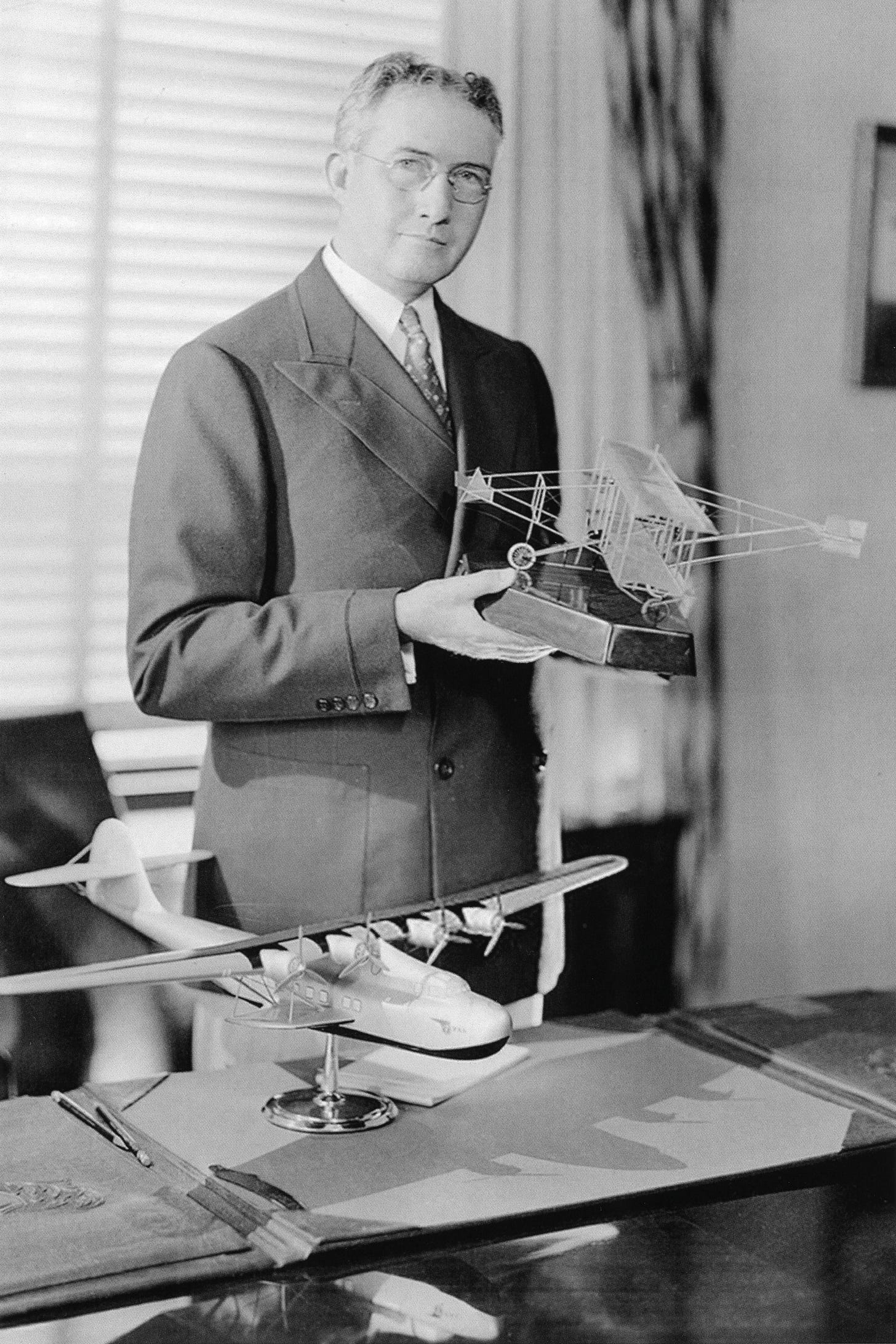
As “aircraft experts,” both James Goodwin Hall and Glenn Martin would be observers of plane endurance, capabilities, and design structure during test flights of the prototype for the later Curtiss Carrier Pigeon, a Curtiss biplane specifically designed for initial night flights between New York and Chicago. Between August 22 and August 26, 1923, at the U.S. Post Office Department Airfield in Omaha, Nebraska, James Goodwin Hall would represent Curtiss Aeroplane and Motor Company as an assistant to the president. Accompanying my grandfather, and independent of Curtiss Aeroplane Company, was Glenn Martin, again, an expert in airplane design. Both received specific coverage in local and national newspapers like the Omaha World-Herald:
“Noted Aviators Here: For the purpose of delving into this phase of the question, Glenn Martin, one of the country’s foremost designers, and J.G. Hall, special representative of the Curtiss company were invited here to observe the tests. Both Mr. Martin and Mr. Hall have picturesque careers in aviation. Mr. Martin having been one of the first men to fly after the Wright brothers, while Mr. Hall was a lieutenant over-seas and later participated in the famous transcontinental race in 1919 by the U.S. Army under the auspices of the American Flying Club.”
Glenn Martin would be quoted extensively in this headlining article, “Aircraft Experts to Design Night Planes.” Recognized as the foremost plane engineer and designer of this pioneering period of flight, Martin would remark about the specific design needs of a successful night flying machine, “From the tests thus far made it appears that the best type of ship [airplane] for night flying must be with slow landing speed and quick maneuvering ability, this enabling the pilot, in case of trouble in darkness, to negotiate a difficult landing in a small field.”
My grandfather would also be cited in this same article regarding the two Curtiss proto-type planes that were sent to the Omaha airfield to be tested for development towards eventual use in night airmail flights from Chicago to New York:
“Mr. Hall’s company is sending two ships [airplanes] of new designs to Omaha for experimentation work. Air mail pilots will test them in further experimentation work, together with others and from the data compiled the future of the night air mail will be designed.”
In further detailing the quoted remarks made by James G. Hall in the Omaha World-Herald in August of 1923, it is clear that he had acquired a self-taught operational understanding of the mechanical and design aspects of the prototype planes he represented for Curtiss Aeroplane Company. Also, his aircraft knowledge would naturally extend to an overall understanding of plane manufacturing:
Planes Cost $20,000 Each. “There are three new features in our experimentation shops.” said Mr. Hall. “The first is the utilization of the Curtiss wing type radiator; the second, the 160-horsepower motor, and the third, the all-metal propeller. The duralumin propeller is so flexible that its tips can almost be bent with the fingers, yet it pulls heavy ships [airplanes] through the air at higher speeds and its factors of safety in time of storm can be appreciated.”
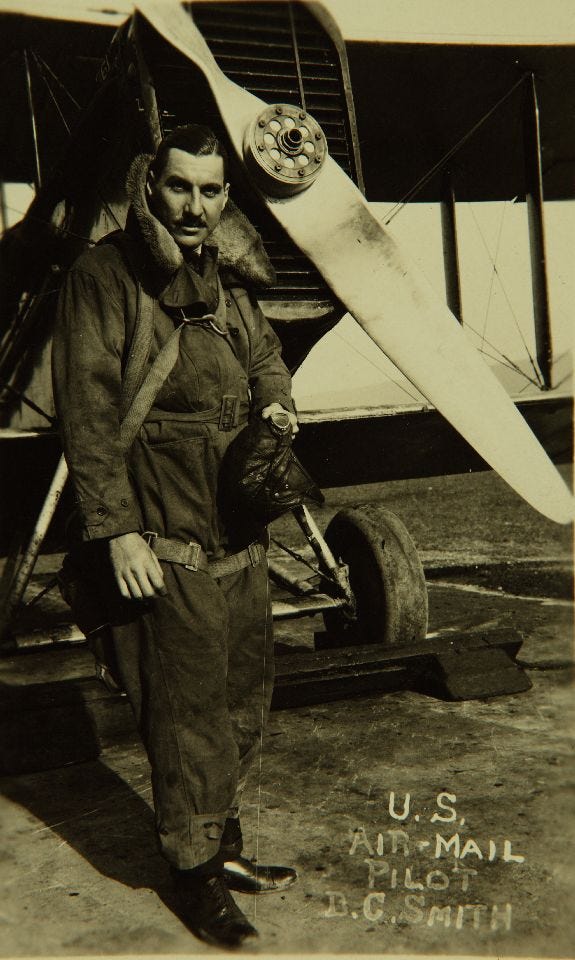
Still representing Curtiss Aeroplane as assistant to the president, my grandfather would again be present for the five-day night mail flight trials in Omaha, Nebraska during the last week of August of 1923. Pilot Dean Smith would make history, successfully completing his inaugural night flight from Chicago, departing at 11p.m. August 21, 1923, and arriving in Omaha, Nebraska at 3:04 a.m., with a flight time of 4 hours and 4 minutes as described in an Omaha-World Herald article, Aircraft Experts to Design Night Planes:
“Smith’s descent was perfect. There were several thousand present when Smith arrived. Army officials and practically every official of the local post office, including postmaster Charles Black were present for the historical landing. “This is the most outstanding accomplishment in aeronautics this year,” commented C.F. Redden, president of the Aeromarine Airways.
J.G. Hall, assistant to the president of Curtiss Aeroplane, also was another interested spectator who came on from New York. Hall piloted a plane in the transcontinental race several years ago, being forced down at Salt Lake City on his way east from San Francisco.”
Nearly two years later, on July 1, 1925, British manufacturer De Haviland would use two planes with the Curtiss Aeroplane designed 12-cylinder “Liberty” engine and deliver the first night express mail service between New York and Chicago. 15,000 spectators would be on hand at Hadley Field, New Brunswick, New Jersey for the inaugural take-off from this eastern terminal along with congressmen, the future Mayor of New York, Fiorello La Guardia, and other high-level postal directors. No doubt, with lucrative federal contracts for postal delivery routes in contention, political connections were leveraged right along with technological design advancement and the ever-increasing cost of capital investment:
“The present flying schedule calls for delivery of mail at the Chicago post office at 6:45 a.m. CST, 11 hours and 45 minutes elapsed time from post office to post office and 15 hours actual flying time between eastern and western terminals. For the present De Haviland planes equipped with Curtiss “Liberty” engines of 400 horsepower are being used.”
With the potential for a profitable enterprise, capitalist investors Howard Earle Coffin and Clement Keys would become major players in securing early routes for carrying airmail city to city, and eventually coast to coast. Coffin, having already formed National Air Transport Company, with substantial financial options of $10 million raised from stock issue, would be in an opportunistic position for route bidding.
Beyond his invention and engineering skills, Coffin’s financial and commercial dominance would be significant. His National Air Transport Company would be selected by the U.S. government to provide airmail service on May 12, 1926 for a route system from Chicago-Moline-St. Joseph-Kansas City-Wichita-Ponca City-Oklahoma City-Dallas. Glenn Curtis would provide ten Curtiss Carrier Pigeon biplanes. Simultaneously, having added a number of former executives of the Post Office Department to his company, N.A.T., Coffin would also successfully bid for the lucrative and now established express night airmail service between Chicago and New York.
Henry Ford would also create his own aircraft company, Ford Transport Service, while other financial partnerships would form with the draw of winning existing government bids for remaining and expanding air service routes.
Clearly, as a mentee of Coffin, James G. Hall would certainly have learned, firsthand, the skills of aircraft financing, and, in fact, this relationship is briefly confirmed in a 1929 newspaper article in The Atlanta Constitution with the headline, “New Member of Exchange: J. Goodwin Hall, An Air Hero of War – Had a Colorful Youth Here (Atlanta).” This lengthy article relates to the next professional step in my grandfather’s professional life as a NYSE member and broker. The article directly acknowledges a profitable association between my grandfather and his business association with Coffin:
“Associate of Coffin: In the financial field Mr. Hall, until recently, was connected with certain of the Howard Coffin’s interests, and is believed to have amassed a fortune while affiliated with Mr. Coffin.”
During this period of early commercial flight development, James G. Hall would also have been interacting and networking with major investors through his position at Curtiss, as assistant to the president. There would have undoubtably been significant access to insider information of any upcoming capital formations and acquisitions and, in general, a full exposure to the business operations of this industry.
From a historical perspective, as a special advisor and assistant to the president of Curtiss Aeroplane, during the testing phases of night airmail service, my grandfather was participating directly in the pioneering of early pre-commercial flight during the early- to mid-1920s.
Personally, and professionally, my grandfather would have shared an association with the pioneering entrepreneurs, inventors, and risk takers of this period represented by Coffin (President of National Air Transport), Curtiss (founder and president of Curtiss Aeroplane and Motor Company), and Martin (founder of Glen L. Martin Company, later merged as Lockheed-Martin). Unquestionably, my grandfather’s background as a decorated World War I pilot and bombardier would have made his aviation skills in demand.
Beyond the mechanical skills, he would also have had to embody a similar chemistry in character and ambition, along with a shared vision.
Coincidentally, the expansion of night airmail service would have a significant impact on the major brokerage services and banks in both New York City and Chicago. By offering faster turnaround time for delivery of non-negotiable securities and cash, vital to timely financial transactions and interest earned on deposited money, there would be greater liquidity for all parties involved. A New York Times article from November 1924 clearly states this advantage for brokerage houses:
“To Carry Securities on Night Air Mail, New Service Established in Part for the Benefit of Banks and Brokers.” Contrary to reports in Wall Street, the new night air mail service between this city [New York City] and Chicago, announced Friday, will not bar securities from service. The night service will operate along the same rules and regulations as the day service. Non-negotiable securities and cash will be carried. In fact, one of the reasons for the establishment of the night service between this city [New York City] and Chicago, was to serve the demands of banks and brokers.76
In another New York Times article from December 1924, “U.S. Aviation Depends on Air Mail’s Success Economically, says Col. Henderson – Service is Proving its Worth and Patronage Grows,” Assistant Postmaster General Col. Paul Henderson promotes the many benefactors of this aviation mail service and states the critical survival of the airmail system as largely economical. With further advertising publicity, Henderson specifically identifies the benefits for the banking industry, which in turn is the capital source for Wall Street transactions and will help drive a “bull” market that would run through the 1920s, until the stock market crash in October 1929:
“Bankers are patrons. Were I to take you to Hazelhurst Field, the New York air mail terminus, and open the air mail pouches for you, I believe you would be impressed with the contents. Banking mail predominates. The reason is apparent. To the banker, more than to any other businessman, time is money. Collections via air mail, whereby transportation time is cut from five days to two, means the saving of enormous sums in actual interest and the release of untold millions in “float”, or money credits which are tied up in the mails, and which while tied up are practically non-existent.”
My grandfather’s ambitions would next take him to the heart of the financial world on Wall Street in New York City, where he would not only become a licensed broker but also an exclusive member of the NYSE. He would witness, first-hand, the financial advantage of airmail travel, creating a growth of new competing brokerages handling more companies, issuing stock and securities, with faster delivery to demanding buyers. Aside from the improved turnaround time of financial liquidity via airmail, James G. Hall would also directly participate in the growth of corporations by stock issuance, utilization of new brokerage trade tools, and benefit from a booming economy, creating market demand and profit.




